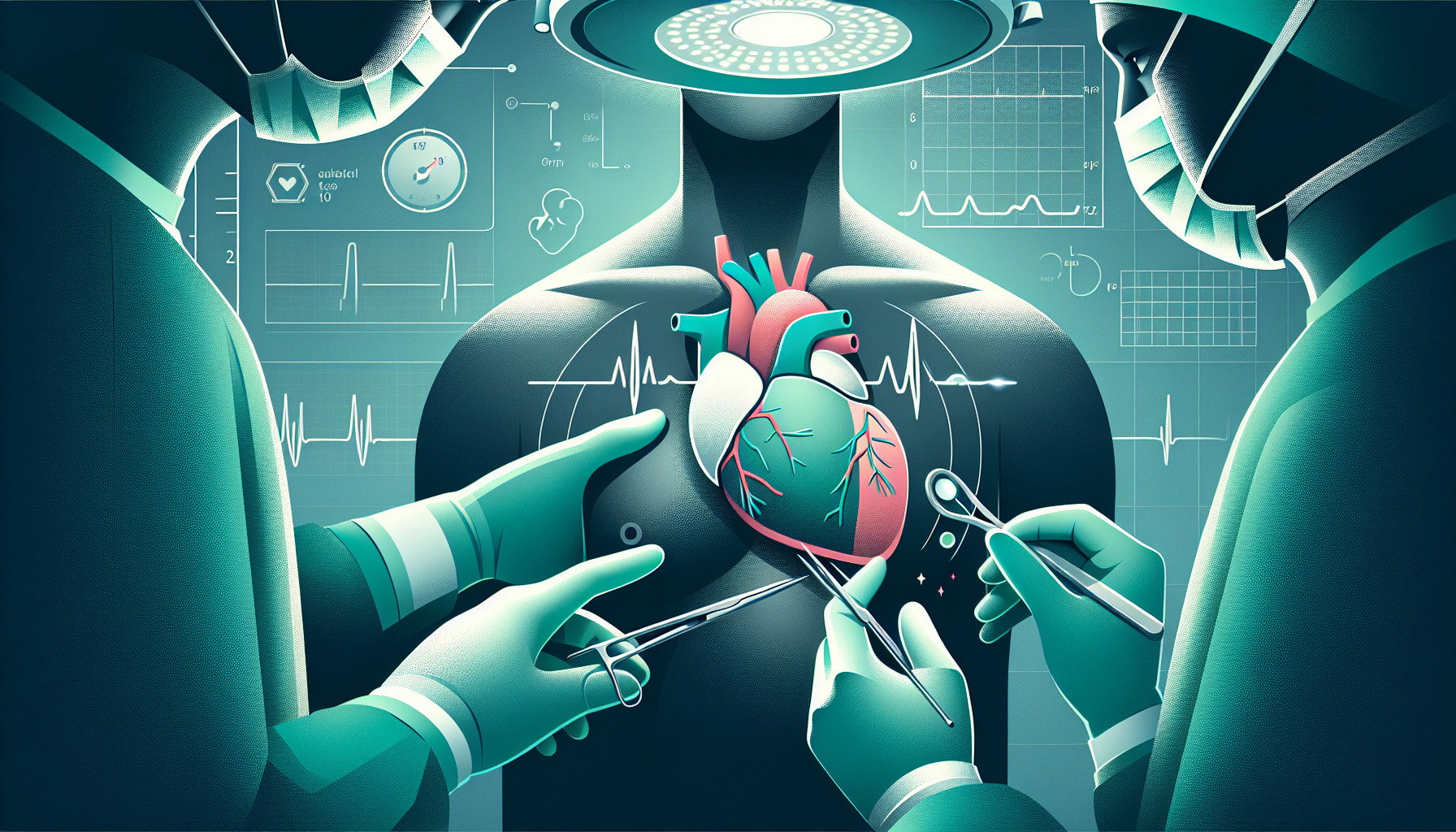Our Summary
This research paper is about a medical procedure known as transcatheter mitral valve replacement. In this procedure, a device is inserted into the heart to replace a damaged or diseased mitral valve, which is one of the four valves that control the flow of blood through the heart. The procedure is performed using a special type of imaging called transesophageal echocardiography, which allows doctors to see the structures and function of the heart in real-time. The paper discusses three different techniques for this procedure: valve-in-MAC, valve-in-ring, and valve-in-valve. These terms refer to different methods of inserting the new valve into the heart.
FAQs
- What is a mitral valve replacement?
- What is the role of transesophageal echocardiography in mitral valve replacement?
- What does the terms valve-in-MAC, valve-in-ring, and valve-in-valve mean in the context of mitral valve replacement?
Doctor’s Tip
One helpful tip a doctor might tell a patient about mitral valve replacement is to follow a healthy diet and exercise regularly to help improve overall heart health and recovery after surgery. Additionally, it’s important to attend follow-up appointments and communicate any changes in symptoms or concerns with your healthcare team.
Suitable For
Patients who are typically recommended for mitral valve replacement are those with severe mitral valve disease, such as mitral valve stenosis or regurgitation, that is causing symptoms such as shortness of breath, fatigue, chest pain, or heart failure. These patients may have failed previous treatments such as medication or mitral valve repair, and may have a high risk for complications with traditional open-heart surgery. Mitral valve replacement may also be recommended for patients who have a congenital heart defect affecting the mitral valve or for those who have developed complications such as infective endocarditis.
Timeline
Before mitral valve replacement:
- Patient is diagnosed with mitral valve disease through symptoms such as shortness of breath, fatigue, and palpitations, as well as diagnostic tests like echocardiogram and cardiac catheterization.
- Patient undergoes preoperative evaluation and tests to assess overall health and determine the best treatment option.
- Patient discusses treatment options with their healthcare team and decides to undergo mitral valve replacement.
- Patient undergoes surgical or transcatheter mitral valve replacement procedure, which may involve open-heart surgery or minimally invasive techniques.
- Patient undergoes postoperative monitoring and rehabilitation to ensure proper healing and recovery.
After mitral valve replacement:
- Patient experiences immediate relief of symptoms such as shortness of breath and fatigue.
- Patient may need to stay in the hospital for a few days for monitoring and recovery.
- Patient undergoes regular follow-up appointments with their healthcare team to monitor the function of the new valve and overall heart health.
- Patient may need to take medications to prevent blood clots and help the heart function properly.
- Patient may need cardiac rehabilitation to regain strength and endurance after surgery.
- Patient is able to return to normal activities and enjoy an improved quality of life with the new mitral valve.
What to Ask Your Doctor
- What is the reason for needing a mitral valve replacement?
- What are the different treatment options available for mitral valve replacement?
- What are the risks and benefits associated with mitral valve replacement surgery?
- How long is the recovery process after mitral valve replacement surgery?
- Will I need to take medication after the surgery? If so, what are the potential side effects?
- How often will I need follow-up appointments after the surgery?
- Are there any lifestyle changes I should make after the surgery to improve my heart health?
- How long can I expect the new mitral valve to last?
- What are the signs and symptoms of any complications that may arise after the surgery?
- Are there any restrictions on physical activity or diet that I should be aware of after the surgery?
Reference
Authors: Jain P, Mohammed AN, Fischer C, Aljure O. Journal: J Cardiothorac Vasc Anesth. 2022 Nov;36(11):4108-4128. doi: 10.1053/j.jvca.2022.05.019. Epub 2022 May 20. PMID: 35915003
